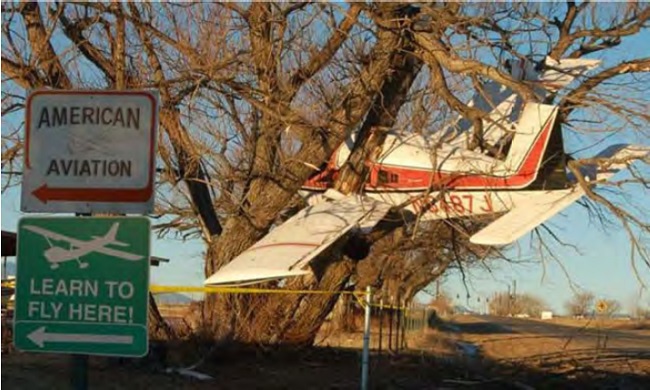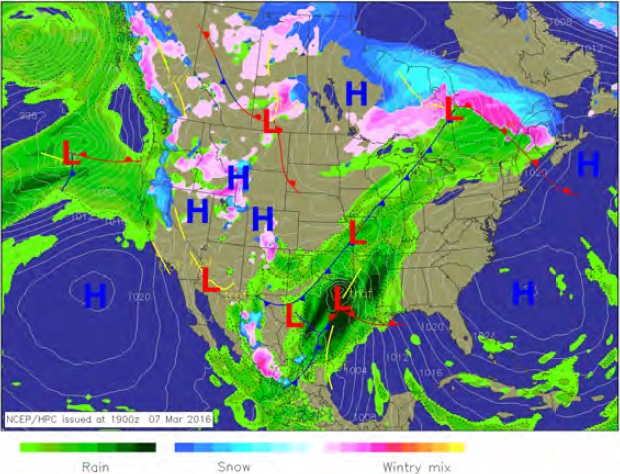GAARMS Report: February 2016 
Fred Gibbs
GAARMS V, the fifth General Aviation Accident Reduction and Mitigation Symposium,
is scheduled for Saturday morning, March 19th , from 9:00AM to Noon, in the large auditorium - ARAVA 110 - on the ASU campus at the Williams-Gateway airport.
GAARMS is a major joint safety initiative by the Arizona Pilots Association (APA), the Arizona Safety Advisory Group (ASAG), and the Scottsdale FSDO Safety Program, for the Arizona-based and trained pilot community. As a member of APA, it is one of the many benefits we offer. We strongly urge you to attend, and to bring a "Wingman!" Stay tuned and watch for more information this month on our website. It will also be distributed/announced via email in Late February/early March as a FAA safety program with WINGS credits.
At the GAARMS, we will be dissecting the two fatal accidents that occurred in-state (Arizona) during the calendar year of 2015, as well as the two fatal out-of-state accidents involving Arizona-based aircraft. All four of the accidents involved Arizona-based pilots. To the best of my knowledge, none were APA members, and none of them ever attended an APA safety program or seminar. While GAARMS will (attempt to) go deep into the accidents, in a nut-shell, there were three accidents that occurred during the takeoff phase of flight. Two are still actual causes unknown, and the third one was categorized as a Loss of Control, an apparent, but not verified, low level stall. (One should never be too quick to pass judgment, or assume anything about an accident is simple, until ALL the facts are uncovered.) The fourth, the recent helicopter crash, is also cause unknown. All of these accidents will be analyzed, scrutinized, and sanitized, so we can present them to you without any finger-pointing or blame. The intent is to educate you about what and how it happened, NOT who to blame, so that you can learn from others' mistakes. That is a critical part of flying - and life - learning from other folks' mistakes, because none of us will live long enough to make all of them ourselves!

Every pilot knows that flying entails more risk than sitting in the rocking chair on the front porch watching air-planes fly overhead. We accept that, and take great care to mitigate any and all risks. Notice the word - MITIGATE. It does not say eliminate, do away with, ignore or what-ever - it says mitigate! So how does one mitigate a risk? Well, first, you have to recognize there are risks, then identify them, then have a method or a plan on what to do to reduce each and every risk. Each plan does not entail a 10-page thesis! However, a simple VFR flight does require you to consider many things. Let's start with weather… simple, right? Well, do you get a weather briefing from flight service, or do you use DUATS? Either is acceptable, and both are available in plain English. DUATS can still give you "raw" data, also known as the "Secret Weather Service Code." Is there a difference between a briefing from the flight service specialist and the DUATS data? Well, Maybe!!!

DUATS gives you data that you have to interpret and understand. You can also print out a copy if you want. The flight service specialist talks a lot as he/she runs through a complete "Standard" briefing which takes longer than a DUATS printout. Why does it take longer? Simple - the briefer is highly trained to interpret the weather, is working the weather all day, and has a very good understanding of weather patterns, trends, and idiosyncrasies, plus the orographic/geographic effects of the weather patterns. But most importantly, the flight service specialist is bound by FAA procedures that specify what the briefer MUST include in any standard briefing, even if you do not want to hear all that information! DUATS gives you data - pages and pages of data. Do you know how to read METARs, TAFs, AIRMETs, SIGMETs, CONVECTIVE SIGMETs, CENTER WEATHER ADVISORIES, PIREPS, NOTAMS, TFRs, SFARs, etc? Most of them do NOT come in plain language. Why is the weather at Sedona, only 18NM from Flagstaff, so different from Flagstaff's? What if the FAA made contacting a weather briefer much harder to do, or even eliminated them altogether, simply saying all the pilots now must use DUATS to brief themselves? Would that impact you? Are you weather savvy enough to brief yourself for every flight? Do you know what the FAR requirement says for pre-flight actions? Do you know where to find all the data - information - required by that FAR?

Do airports pose a risk? Think about going to Telluride, Aspen, or Leadville, or just into Sedona. Hmmmm, any risks there? How about the approach into those airports? I am not talking about instrument approaches, just plain ol' VFR flying into those airports. What about the terrain? Do any of them have one way in/one way out? What about density altitudes? Is fuel available? Runway conditions - PTCH SIR BRAP - oops, raw data, but I'm sure you know what that NOTAM information says, right?
Which segment of flight poses the most danger? Take off and climb out? The en route segment? The approach and landing segment? Statistics show that an awful lot of fatal accidents occur during the take off segment, and in fact, 3 of the 4 fatal accidents to be discussed during this year's GAARMS occurred in that segment. If you have a problem during the climb out segment, you have very little time to formulate a plan. Hopefully, you did a pre-takeoff briefing for all your passengers on what to do if something occurs, and you have a plan to deal with that issue if it occurs. Do you just pull onto the runway, shove in the throttle and go? Or do you pull out, line up, power up, check everything one last time, then release the brakes, with a plan to check acceleration and have a point of no return (or an abort point) if your airspeed is not what it should be by that point? Could you still have a problem anyway? YUP, but you have done everything in your power to mitigate the potential risks. Besides, you have an engine out escape plan, knowing what you will do if that happens, right?
In general, the en route segment of flight for VFR pilots is fraught with weather problems, and continued VFR flight into instrument meteorological conditions (IMC) remains one of the top 10 causes of fatal accidents. Sure, you could have an engine problem, but you should have sufficient altitude, time, and training to determine a safe plan of action to make a safe off-airport landing if it comes to that. If you are in severe clear, then the weather should not be an issue, but what if you are on top of a broken, or heaven forbid, an overcast deck? Now what? Do you declare an emergency? "Oh no, not that!!!! I may have to answer to the FAA, do paperwork, have them look at my logbook, look at my aircraft logbooks, etc. YIKES, I don't want that to happen, so I will just wing it!" There, my friend, is an accident just looking for a place to happen! Because it happens so rarely, refresher training on emergency descents and landings is something you should practice and review with your flight instructor periodically.
There are a lot of accidents in the approach and landing phase of flight. Fortunately, most are NOT fatal, but just involve aircraft damage, from a bent prop or dinged wingtip, to the aircraft being declared a total by your insurance company. I tell all of my potential students that learning to fly is relatively easy, whereas landing is a whole ‘nother ballgame! Bad landings usually do not injure people, other than their ego, but sure do keep maintenance shops busy and manufacturers making new replacement airplanes. The FAA tries to protect your passengers from danger by requiring you, the pilot, to have logged 3 take offs and landings in the previous 90 days before carrying those passengers. They recognize that proficiency is necessary to ensure safety, and the 90 day rule is absolute minimum safety. Those 3 take offs and landings only make you legal, not necessarily proficient. So, just how proficient are you on day 89?
In closing, we all recognize that flying has risks. We all take steps to mitigate those risks, and we recognize that every flight poses it own set of risks. Sometimes Mother Nature makes things very interesting, and good ol' Murphy often tries to interject "fun" or challenges into our flights. Training and good, sound aeronautical decision making certainly helps mitigate those risks. Being macho, believing we are invincible, "Get home-it is," "Watch this," etc. will often times lead us to the brink or down the primrose path, right into one of the presentations at my GAARMS symposiums.
SAFETY PROGRAMS: Should you desire a safety or educational program at your local airport, simply contact me directly at This email address is being protected from spambots. You need JavaScript enabled to view it., or call me at 410-206-3753. The Arizona Pilots Association provides the safety programs at no charge. We can also help you organize a program of your choice, and we can recommend programs that your pilot community might really like.
